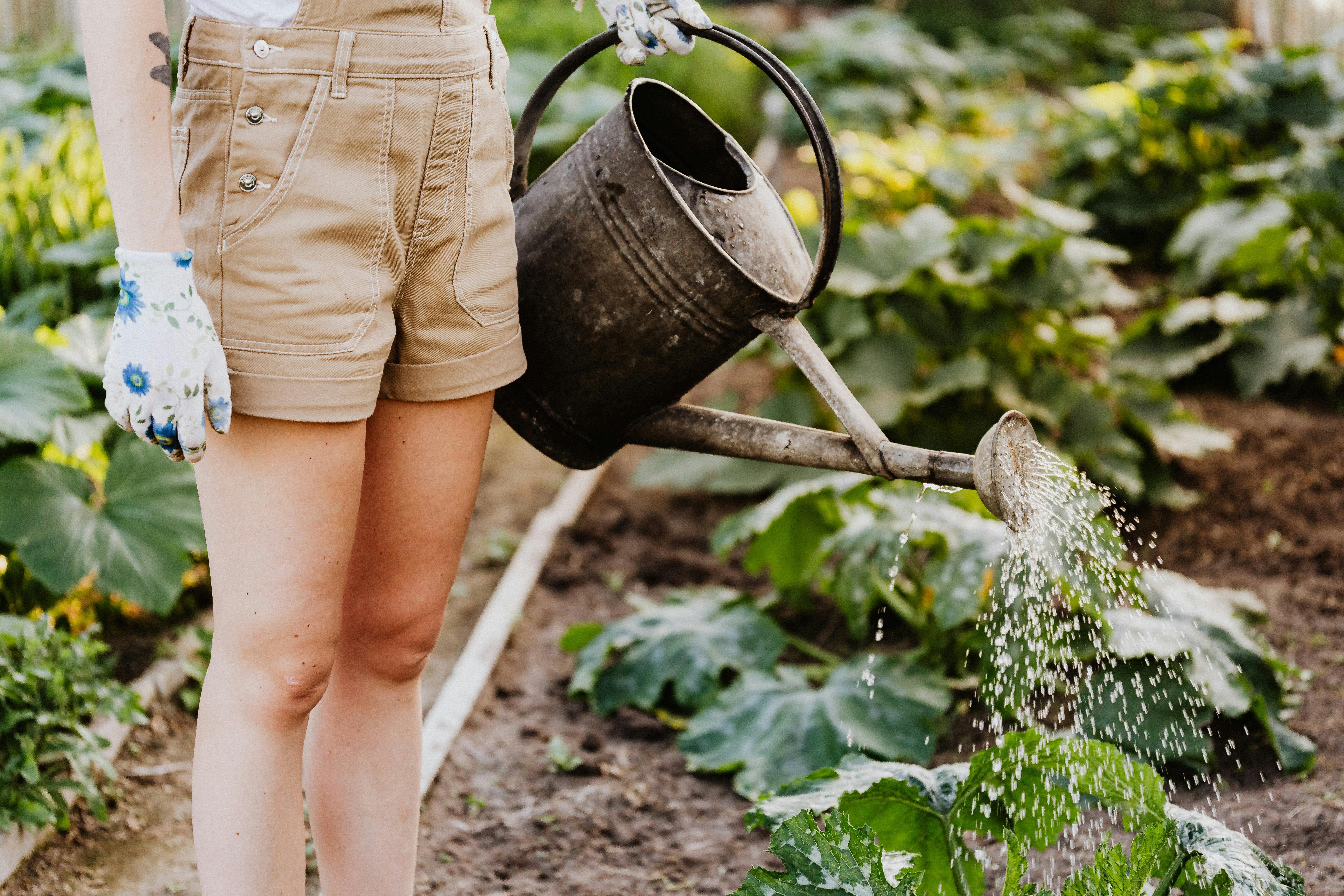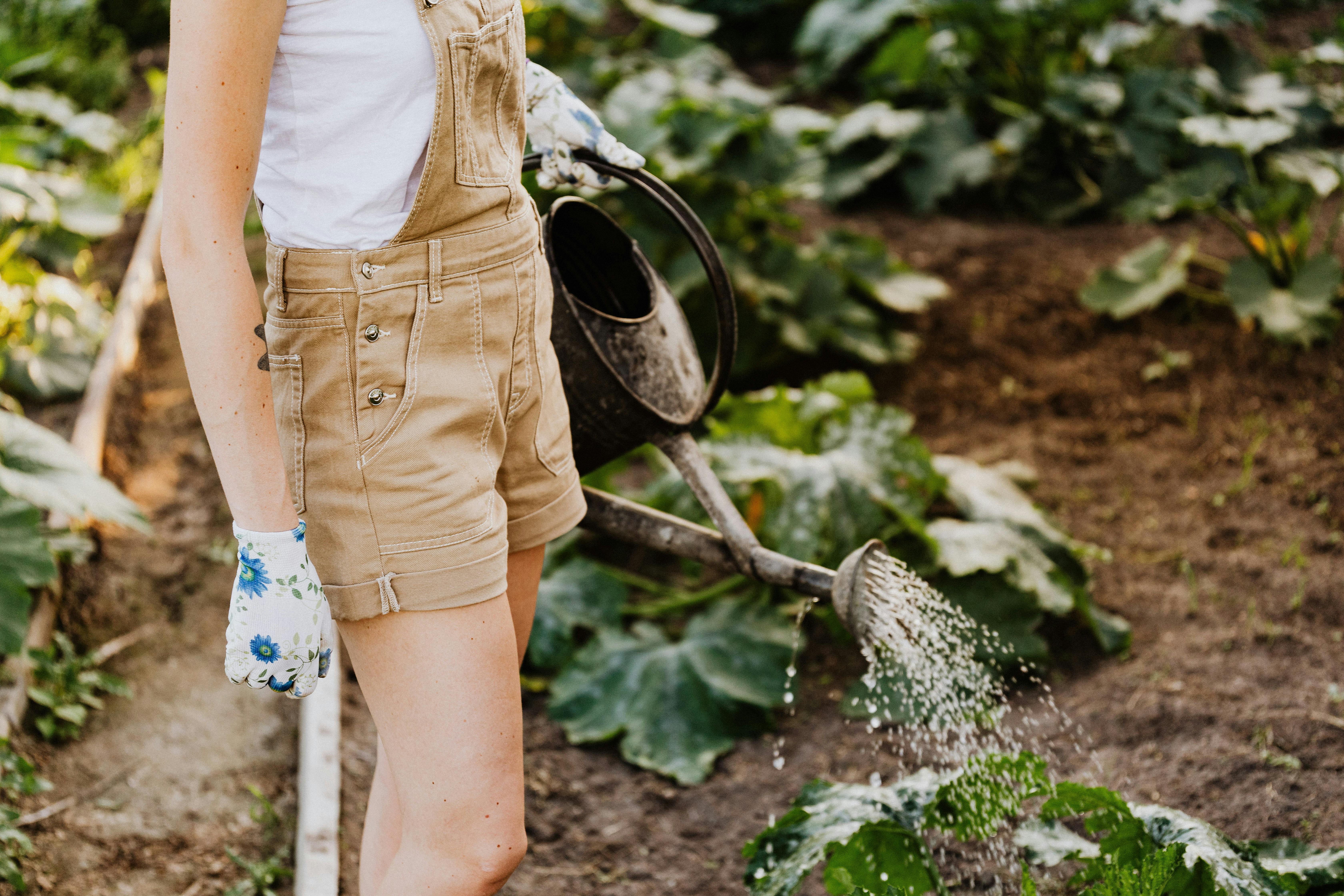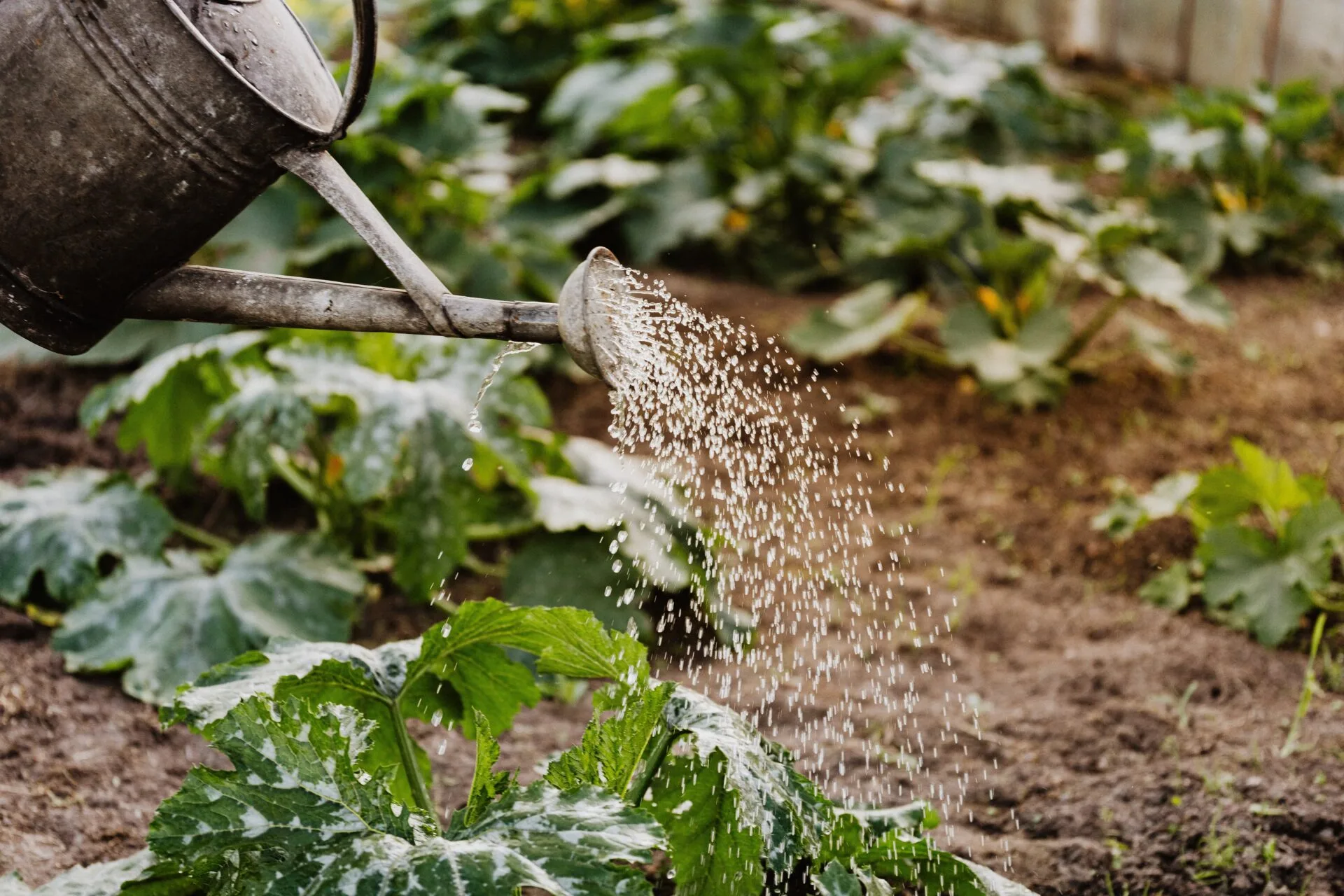Strawberries are a delicious and nutritious fruit that can be grown in home gardens. When growing strawberries, it is important to provide the plants with the right amount of water in order to ensure they are healthy and productive. Establishing an optimal weekly watering schedule for your strawberry plants is key to their success. With the proper water schedule, you can ensure that your strawberry plants receive enough water to stay healthy and produce delicious fruits. In this article, we will discuss the optimal weekly watering schedule for strawberry plants, as well as how to adjust it for different climates.Watering strawberry plants weekly is important for the health of the plants as it ensures that the soil remains moist and that the roots receive enough water to stay healthy. Regular watering can also help ensure that the fruit produced has a good flavor and texture. Some of the benefits of watering strawberry plants weekly include:
1. Healthy Roots: Watering strawberry plants on a regular basis helps keep their roots healthy, as it ensures that they are getting enough water to stay hydrated and grow properly.
2. Stronger Plants: By providing moisture to the soil, regular watering can help make sure that your strawberry plants are strong and healthy, which will help them withstand any kind of weather or other environmental conditions.
3. Increased Fruit Production: By providing adequate water to your strawberry plants, it can help increase their fruit production as well as improve the flavor and texture of the fruit produced.
4. Reduced Risk of Disease: Regularly watering your strawberry plants can also reduce their risk of disease by keeping them hydrated and preventing diseases from taking hold in dry conditions.
Water Amount
The amount of water that your strawberry plants need will depend on the climate you live in. In drier climates, you may need to water your plants more often and for longer periods of time. If you live in a wetter climate, you will likely need to water your plants less frequently. You should also pay attention to the soil moisture level when determining how much water to give your plants. If the soil is already moist, then you may not need to add more water.
Frequency
It’s important to water your strawberry plants consistently and regularly. This will help ensure that the soil moisture levels stay consistent and that your plants don’t become stressed due to lack of water. Generally, it’s best to water your strawberry plants every few days or once a week depending on the weather conditions and the type of soil they are planted in. Make sure not to overwater the plants either, as this can lead to fungal diseases or root rot.
Time of Day
The time of day that you choose to water your strawberry plants is also important. It’s best to avoid watering them during the hottest part of the day as this can lead to sunburn or other problems with the foliage. Instead, opt for either early morning or late evening when temperatures are cooler and there’s less direct sunlight on the foliage. This will help ensure that your strawberry plants get all the moisture they need without any stress from overheating.
Mulch
Mulching around your strawberry plants can also help conserve moisture in between watering sessions and reduce stress on both the plant and its roots due to temperature fluctuations throughout the day. A layer of organic mulch such as straw or hay can help keep moisture levels consistent while also protecting against weeds and keeping fruit clean as it ripens.
Establishing a Regular Watering Schedule
It is important to establish a regular watering schedule for your plants. This will ensure that they have the right amount of water and nutrients to stay healthy and thrive. Regular watering also helps reduce stress on plants, as it allows them to get the moisture they need without having to struggle for it. A regular watering schedule can be created by considering the type of plants you have, the climate, and your watering habits.
For most plants, a weekly watering is sufficient. If you live in an area with hot and dry climates, you may need to water more often than in cooler climates. It is also important to consider the type of soil your plants are in; clay soils will need more frequent watering than sandy soils. Additionally, consider how much sun your plants get; if they are in a sunny spot, they will need more water than those in shaded areas.
When creating a regular watering schedule, it is important to ensure that your plants are getting enough water without being over-watered or under-watered. Over-watering can lead to root rot or other diseases, while under-watering can cause wilting and damage leaves. To ensure proper hydration levels for your plants, consider using a moisture meter or soil probe to measure the moisture levels of the soil before and after watering sessions.
Finally, make sure you stick with your regular watering schedule once you have established one! This will help keep your plants healthy and happy for years to come!
How Much Water is Needed for Strawberry Plants?
Strawberry plants require regular watering for optimal growth and production of juicy fruits. How much water your strawberry plants need depends on a variety of factors, such as climate, soil type, and how often you water. Generally, strawberry plants need 1-2 inches of water per week during the growing season and slightly less in the winter months. To ensure your plants get enough water, it’s important to keep an eye on the soil moisture level. If the soil feels dry to the touch, then it’s time to water your strawberries.
To help conserve moisture in the soil and reduce evaporation, you can use mulch around your strawberry plants. Using a 2-3 inch layer of straw or other organic material helps keep soil temperatures cool and retains moisture. Additionally, you should avoid overhead watering since this can cause fungal diseases that can damage strawberry plants. Instead, use drip irrigation or soaker hoses to deliver water directly to the roots of the plant.
Overall, proper watering is essential for healthy strawberry plants that produce an abundance of delicious fruits. Make sure you monitor your plant’s soil moisture levels regularly and provide adequate water when needed. With a little extra care and attention, you’ll be able to enjoy fresh strawberries from your own garden all season long!
Understanding the Effects of Overwatering
Overwatering is an issue that can lead to a variety of problems with plants. When too much water is given, the roots become saturated and cannot absorb oxygen. This causes root rot, which can be fatal to the plant. In addition, overwatering can cause leaves to become yellow or discolored as well as produce fungal issues like mildew or mold. It can also lead to nutrient deficiencies in the soil, which can result in reduced growth and other health problems for the plant.
It is important to understand how much water your plants need and how often they should be watered in order to avoid overwatering them. Factors such as the type of plant, soil type, climate, and amount of sun exposure all affect how often you should water your plants. Additionally, checking for signs of overwatering such as yellow or droopy leaves can help you determine if your plants are getting too much water.
If you have been overwatering your plants, there are several steps you can take to remedy the situation. First, reduce the amount of water you give your plants and only water when needed. Additionally, adding additional drainage or aeration to the soil can help prevent root rot from occurring due to excessive moisture in the soil. Finally, it is important to ensure that your soil is not compacted or overly wet as this will prevent oxygen from reaching the roots and increase chances of root rot occurring in future watering sessions. Taking these steps will help ensure that your plants stay healthy and happy!

Signs of Underwatering and What to Do About It
Underwatering is a common problem for gardeners. If you notice your plants wilting or their leaves turning yellow, it could be a sign that they are not getting enough water. Other signs of underwatering include dry soil, brittle stems, and slow growth. If you think your plants may be suffering from underwatering, there are a few things you can do to help them.
The first step is to check the soil for moisture. Stick your finger into the soil and see how it feels. If the soil is dry to the touch, it’s likely that your plants need water. Once you’ve determined that your plants need more water, it’s time to decide how best to give it to them.
One way is to water them directly with a hose or watering can. Make sure that you give them enough water so that the soil is thoroughly saturated. You may also want to consider adding mulch or compost around the base of your plants, which will help retain moisture in the soil.
If possible, try to get into a regular watering schedule so that your plants don’t suffer from underwatering again in the future. Consider setting an alarm on your phone or using an automated watering system if necessary. It’s also important to make sure that the soil drains well so that excess water doesn’t build up around the roots of your plants and cause root rot or other problems.
Checking the Soil Moisture Level Before Watering
Knowing when to water your plants is essential to keeping them healthy and productive. To make sure your plants are getting enough moisture, it’s important to check the soil moisture level before watering. Checking the soil moisture level can help you determine when and how much water is needed for your plants.
The best way to check the soil moisture level is to use a soil moisture meter. By inserting a metal probe into the soil, these meters measure the amount of moisture in the soil and provide an accurate reading of the soil’s moisture content. They are available at most garden centers or online.
Another way of checking the soil’s moisture level is to use your fingers. Insert your index finger about two inches into the soil and feel around for dampness or dryness. If it feels damp, then there is enough water in the soil, if it feels dry, then it may be time to water your plants.
More experienced gardeners may be able to tell just by looking at their plants if they need more water or not. If they appear wilted or discolored, this could indicate that they need more water. Additionally, in areas with heavy clay soils that can retain a lot of water, checking for signs of sogginess around plant roots can help you determine if there’s too much water present.
Overall, checking the soil’s moisture content before watering your plants is an important part of being a responsible gardener and ensuring that your plants stay healthy and productive.
Different Approaches to Watering Strawberry Plants
Watering strawberry plants is an important part of growing healthy and delicious fruit. Different approaches can be taken when it comes to watering, depending on the type of strawberry plant, the climate, and the soil conditions. For example, in areas with hot summers, more frequent watering may be necessary than in cooler climates. In addition, sandy soils may require more frequent irrigation than clay soils. Here are some different approaches to watering strawberry plants:
Mulching
Mulching is a great way to conserve moisture around strawberry plants and help reduce weeds. Organic mulches such as grass clippings or straw can be laid down in a layer around the plants after planting. This will help keep the soil moist and reduce evaporation from the sun and wind.
Drip Irrigation
Drip irrigation is a great way to water strawberries efficiently while conserving water. A drip irrigation system consists of tubes that are laid out around the plants with small holes along them that allow water to slowly drip out onto the soil. This helps ensure that each plant gets an adequate amount of water without wasting any by runoff or evaporation.
Deep Watering
Deep watering is another good option for watering strawberry plants, especially those in containers or raised beds. To deep water your strawberry plants, simply fill up a large container with water and let it sit for several hours until all of the soil has been saturated with moisture from below. This helps ensure that each plant’s roots are getting enough moisture while preventing runoff or evaporation from happening at ground level.
Overall, there are many different approaches for watering strawberry plants depending on your climate, soil conditions, and type of plant you have. It’s important to know what works best for your particular situation so you can get the best results when it comes to producing delicious strawberries!

Conclusion
The optimal weekly watering schedule for strawberry plants is determined by several factors, including the soil type, the climate, and the amount of direct sunlight the plant receives. Different watering schedules may be necessary depending on these factors. Generally, however, strawberry plants should be watered three times a week with one to two inches of water each time. Additionally, it is important to make sure the soil is evenly moist throughout the week and not saturated at any point.
Overall, ensuring an optimal weekly watering schedule for strawberry plants can help them thrive and produce more fruit. With proper upkeep and maintenance, you can ensure your strawberry plants will stay healthy and productive for years to come.
Finally, it is important to monitor your strawberry plants regularly for signs of overwatering or underwatering. If either problem arises, adjust your weekly watering schedule accordingly to provide your plants with exactly what they need in order to produce delicious fruit!



